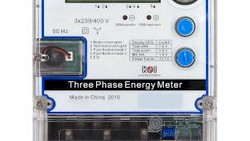Earthing, also known as grounding, is a critical aspect of electrical installations. It provides a safe path for the dissipation of fault currents, reducing the risk of electric shock and protecting equipment from damage. This article will cover the principles of earthing, its importance, types of earthing systems, and practical considerations for implementing an effective earthing solution.
Principles of Earthing
The primary purpose of earthing is to create a low-impedance path for fault currents to flow through, preventing dangerous voltages from appearing on conductive parts that can cause harm to humans or damage equipment. By connecting the metallic parts of an electrical system to the earth, the fault current can safely dissipate, limiting the potential difference between conductive parts and the ground.
What are the Key Objectives of Earthing?
- Safety
Earthing is primarily done to ensure safety by providing a low resistance path for fault currents to flow. In the event of a fault, the current flows through the earthing system instead of passing through a person or equipment, thereby minimizing the risk of electric shock and damage to equipment. This is particularly important in environments where there is a high risk of electrical hazards, such as construction sites, industrial plants, and hospitals. - Voltage stabilization
Earthing is also important for voltage stabilization, particularly in areas where there are fluctuations in the power supply. By providing a low-impedance path to ground, earthing helps to limit voltage fluctuations and transient overvoltages that can cause damage to electrical and electronic equipment. This is especially important in areas where sensitive equipment, such as computers and medical devices, are used. - Lightning protection
Earthing is also essential for lightning protection. Lightning strikes can cause significant damage to buildings and their electrical systems. By providing a path for lightning currents to flow into the earth, the earthing system helps to reduce the risk of damage and protect the building and its occupants. This is particularly important in areas where lightning strikes are common, such as in regions with a high incidence of thunderstorms. - Electromagnetic compatibility (EMC)
Earthing is important for electromagnetic compatibility (EMC) in electrical systems. When electrical equipment is not properly grounded, it can cause electromagnetic interference (EMI) that can disrupt the operation of other electrical equipment in the area. By providing a low-impedance path to ground, earthing helps to reduce EMI and ensure that electrical equipment operates correctly. - Signal reference
Earthing is also important for signal reference in electronic circuits. In electronic circuits, a common reference point is required for signals to be properly transmitted and received. By providing a common ground reference, earthing helps to ensure that signals are transmitted correctly, and that electronic equipment operates properly. - Corrosion prevention
Earthing is also important for preventing corrosion in metal structures and equipment. When metal structures are not properly grounded, they can develop stray currents that can cause corrosion and damage to the metal. By providing a low-impedance path to ground, earthing helps to prevent the build-up of stray currents and reduce the risk of corrosion.
The Importance of Earthing
Earthing plays a crucial role in maintaining the overall safety and stability of electrical installations.
- Protection against electric shock
Earthing is essential for protecting people and equipment against electrical hazards. Electrical faults can cause serious injuries or even fatalities if a person comes into contact with live conductive parts. Earthing provides a low-impedance path for fault currents to flow, minimizing the potential difference between conductive parts and the ground, and reducing the risk of electric shock. - Equipment protection
Proper earthing protects equipment from damage caused by fault currents, voltage fluctuations, and transient overvoltages. It also helps prevent the build-up of static charges, which can cause sparks and damage to sensitive electronic components. - Reduced risk of fire
By providing a path for fault currents and lightning discharges, earthing reduces the risk of fire resulting from electrical faults or lightning strikes. - Improved power quality
A well-designed earthing system can help maintain stable voltage levels, reduce electromagnetic interference (EMI), and improve the overall quality of power distributed throughout an electrical installation.
Types of Earthing Systems
There are several types of earthing systems, each with its advantages and specific applications. The most common types include:
TN System
In the TN system (Terra Neutral), the neutral and earth conductors are connected at the power source. There are three subtypes of TN systems: TN-S, TN-C, and TN-C-S.
- TN-S (Separate)
The protective earth (PE) and neutral (N) are separate throughout the installation, providing a higher level of safety. - TN-C (Combined)
The protective earth and neutral are combined in a single conductor (PEN) throughout the installation. This system is more susceptible to touch voltages and is less common in modern installations. - TN-C-S (Combined-Separate)
The protective earth and neutral are combined in a PEN conductor up to a certain distribution point, after which they are separated. This provides a balance between safety and cost-effectiveness.
TT System
In the TT system (Terra-Terra), the neutral and earth conductors are separate throughout the installation, and the earth electrode is independent of the power source's earth. This system is commonly used in rural areas and offers good protection against EMI, but may require additional protection measures against electric shock.
IT System
In the IT system (Isolated Terra), the power source's neutral is isolated from the earth. This system is used in applications where power continuity is crucial, such as hospitals and data centres. It offers high protection against electric shock but requires continuous monitoring for insulation faults.
Practical Considerations for Implementing Earthing Solutions
When designing and implementing an earthing system, several factors need to be considered:
- Soil resistivity
The effectiveness of an earthing system relies on the low resistance of the soil in which the earth electrode is installed. Soil resistivity varies with its composition, moisture content, and temperature. Conducting a soil resistivity test is essential for determining the optimal earthing electrode design and placement. - Earth electrode selection
The choice of earth electrode depends on the soil resistivity, installation cost, and corrosion resistance. Common types of earth electrodes include plate electrodes, rod electrodes, and buried conductive strips. - Electrode installation
The installation of earth electrodes should consider factors such as depth, spacing, and interconnection. Proper installation ensures a low-impedance path for fault currents and minimizes the risk of damage to the electrode due to corrosion or mechanical stress. - Bonding
All metallic parts of an electrical installation, such as equipment enclosures and cable trays, should be bonded to the earthing system. This ensures a low-impedance path for fault currents and minimizes potential differences between conductive parts. - Earthing conductor sizing
The size of earthing conductors should be chosen based on the expected fault current and the duration of the fault. Conductors must be large enough to carry fault currents without overheating or sustaining damage. - Earth fault loop impedance
The earth fault loop impedance should be low enough to ensure rapid disconnection of the faulty circuit by the protective device, such as a circuit breaker or fuse. This minimizes the risk of electric shock and equipment damage. - Testing and maintenance
Regular testing and maintenance of the earthing system are crucial for ensuring its effectiveness and safety. Tests should include measuring earth electrode resistance, continuity of earthing conductors, and the effectiveness of bonding.
Takeaway
Earthing is a critical aspect of electrical installations that serves to protect people, equipment, and the overall stability of the electrical system. By understanding the principles of earthing, the types of earthing systems, and practical considerations for implementing an effective earthing solution, engineers and electricians can ensure the safety and reliability of their electrical installations.
To implement a comprehensive earthing system, one must consider soil resistivity, earth electrode selection, proper electrode installation, bonding, earthing conductor sizing, earth fault loop impedance, and regular testing and maintenance. By carefully considering these factors, a safe and effective earthing system can be achieved, promoting safety and reliability in electrical installations.
Reference, Earthing Standards
- IEEE Std 80-2013
This standard provides guidelines for the design of substation grounding systems, including the calculation of soil resistivity and the selection of grounding materials. - IEC 60364-4-41
This standard provides guidelines for the design of earthing systems in low-voltage electrical installations, including the selection of earthing systems, earthing electrodes, and bonding arrangements. - BS 7430
This British Standard provides guidance on the design and installation of earthing systems, including the selection of earthing methods, earthing electrodes, and protective conductors. - NFPA 70
The National Electrical Code (NEC) provides guidelines for the installation of earthing systems in the United States, including the selection of earthing methods, earthing electrodes, and bonding arrangements.
Editor's note: This article was originally published in July 2023 and has been updated for comprehensiveness.





All comments are moderated before being published. Inappropriate or off-topic comments may not be approved.